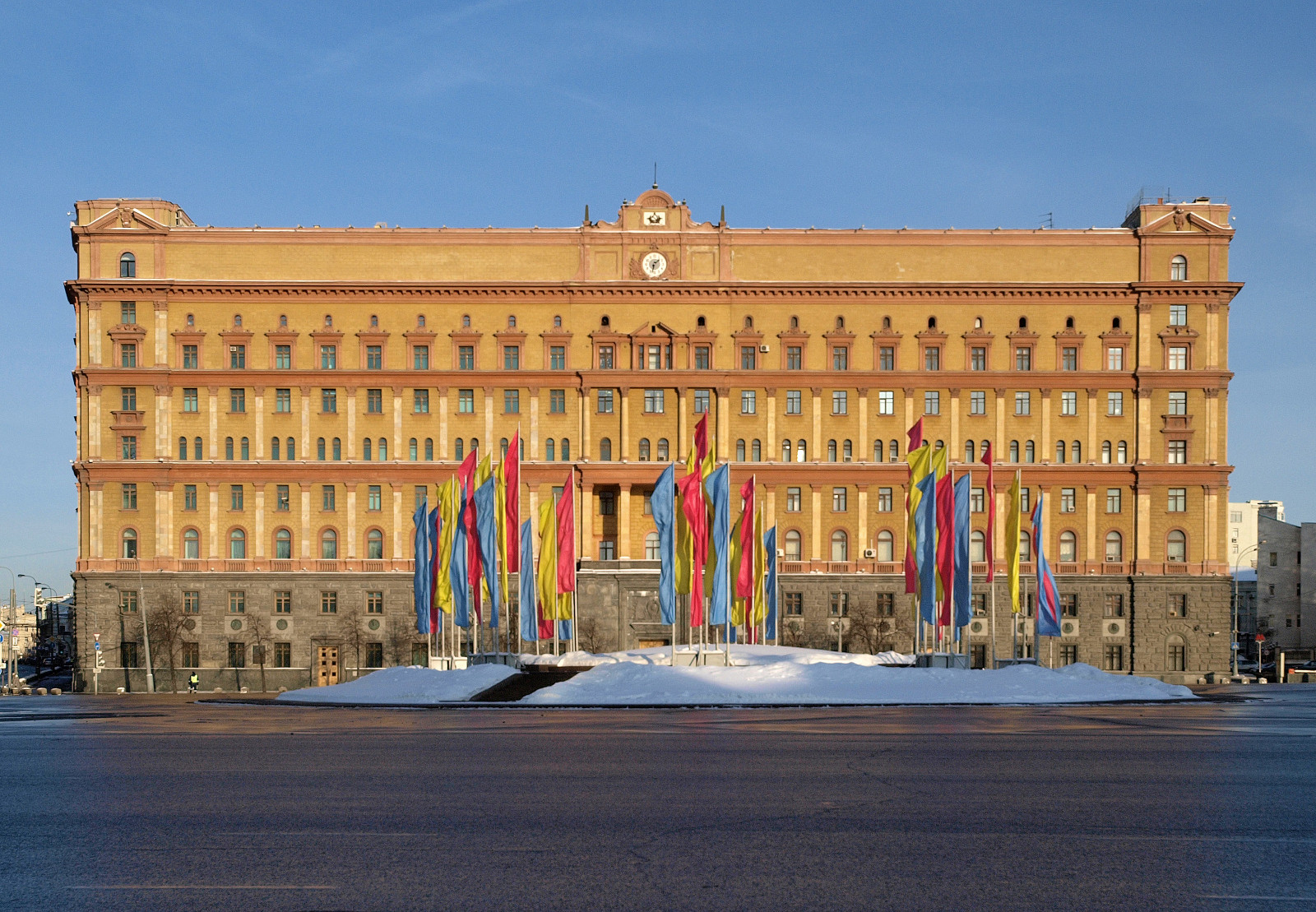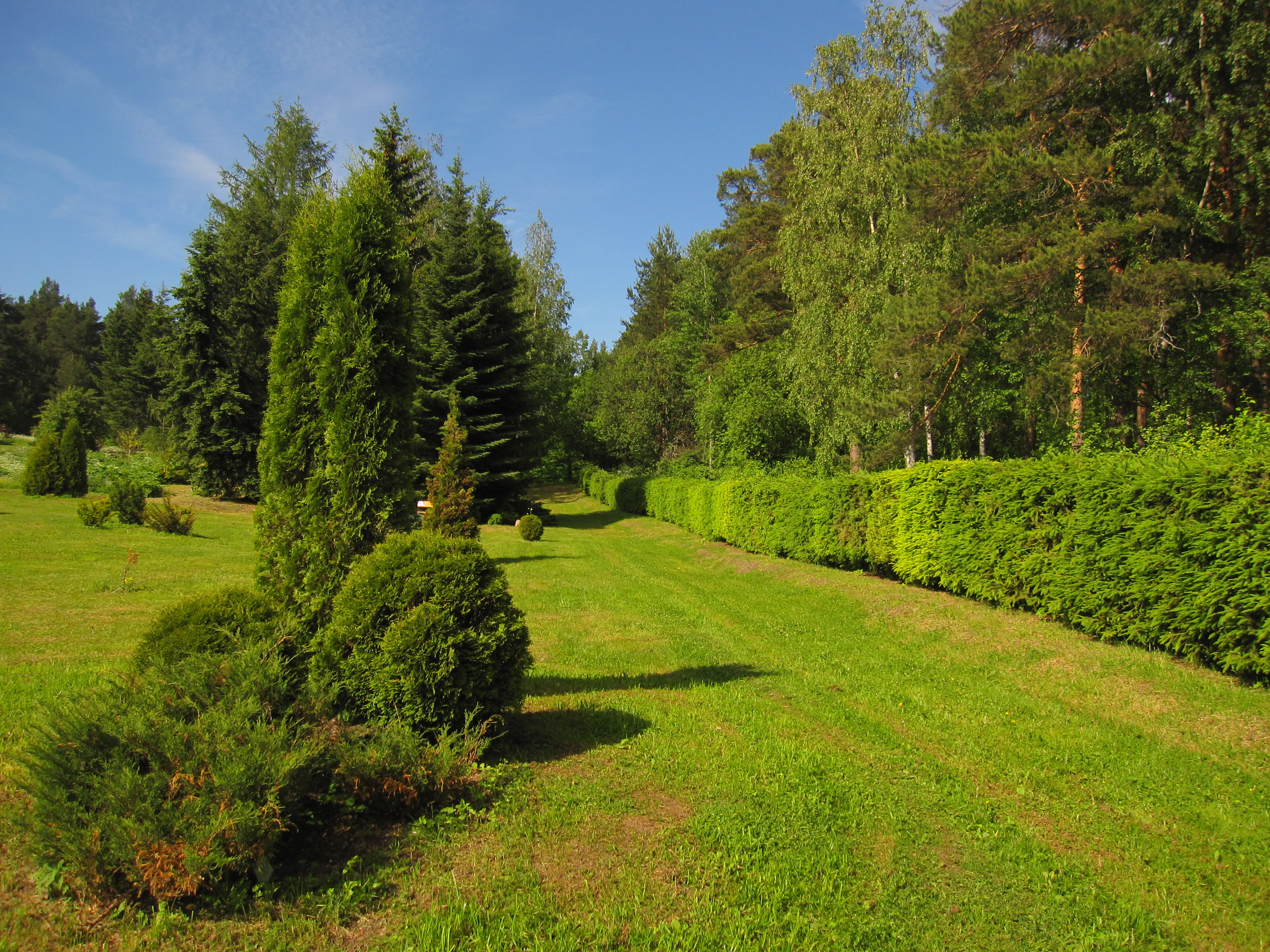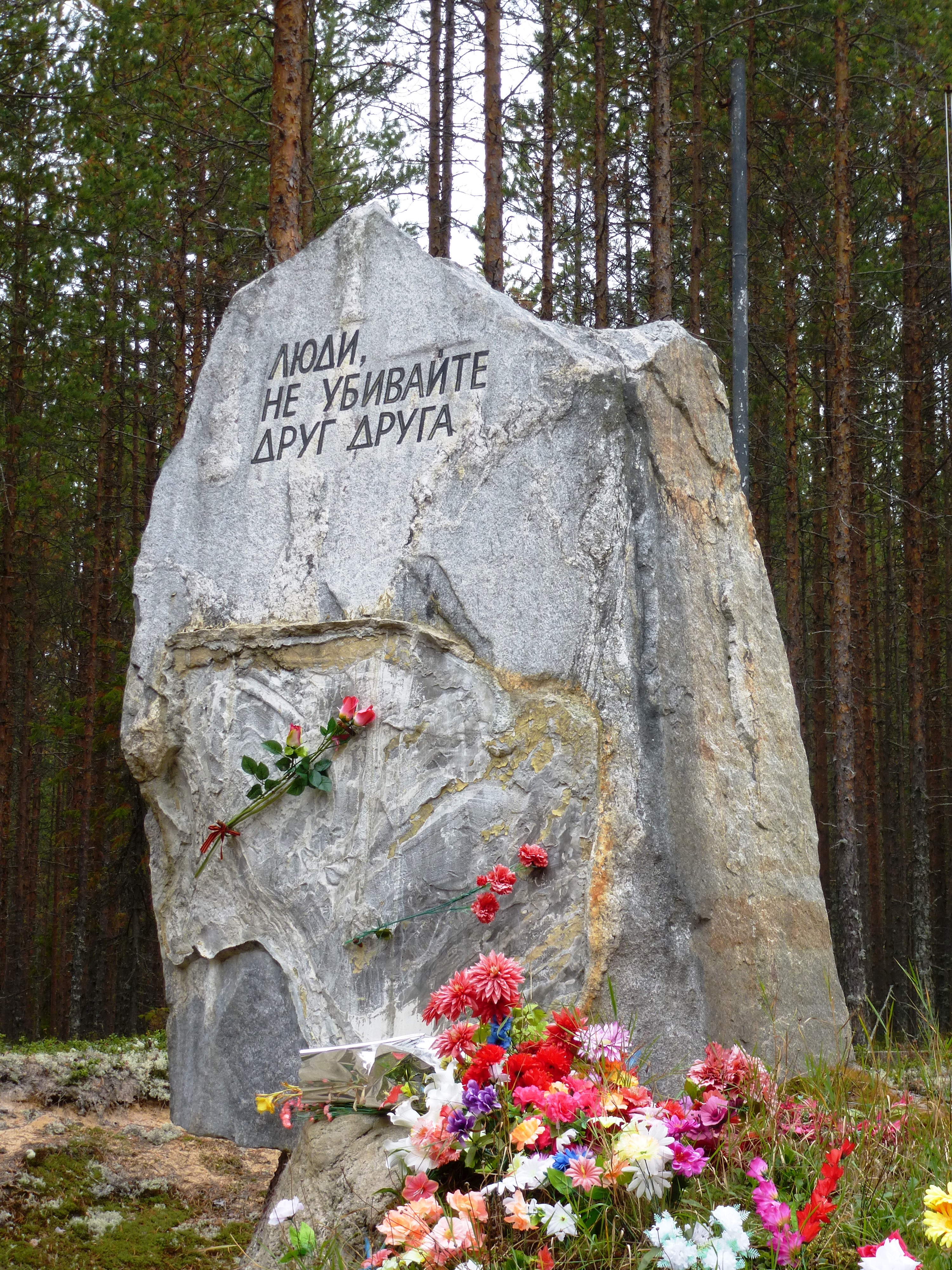|
Finnish Operation Of The NKVD
The Finnish Operation of the NKVD was a mass arrest, execution and deportations of persons of Finnish origin in the Soviet Union by the NKVD during the period of Great Purge (1937–1938). It was a part of the larger mass operations of the NKVD which targeted many minority nationalities in the Soviet Union. Different estimations range from 8,000 to 25,000 of Finns killed or disappearing during the repression. Early anti-Finnish campaigns Soviet repression of the Ingrian Finns, who are a people closely related to the Finns, started at the same time as the forced collectivization in the Soviet Union in 1928. Between 1929 and 1931 Soviet authorities deported 18,000 people from areas near the Finnish border, consisting of up to 16% of the total Ingrian Finnic population. All remaining Finns in four border parishes were deported in 1936 and replaced with Russians. In 1937 all Finnish-language schools, publications, broadcasts, and Ingrian Lutheran churches were closed down. The Finn ... [...More Info...] [...Related Items...] OR: [Wikipedia] [Google] [Baidu] |
Mass Operations Of The NKVD
Mass operations of the People's Comissariate of Internal Affairs (NKVD) were carried out during the Great Purge and targeted specific categories of people. As a rule, they were carried out according to the corresponding order of the People's Commissar of Internal Affairs Nikolai Yezhov. List * Ex-kulaks, criminals, and other anti-Soviet "elements" ~386,798 killed (mostly ethnic Ukrainians) **NKVD Order No. 00447 *Family members of traitors to the Motherland * Kharbin Operation of the NKVD ~30,992 killed National operations of the NKVD The operations of this type in this period targeted "foreign" ethnicities (ethnicities with cross-border ties to foreign nation-states), unlike nationally targeted repressions during World War II. According to historian Oleg Khlevniuk, Stalin became concerned about rearguard uprisings that were seen in the Spanish Civil War and believed that "nationalities of foreign governments" posed a threat in border regions, even if they were Soviet cit ... [...More Info...] [...Related Items...] OR: [Wikipedia] [Google] [Baidu] |
NKVD Troika
NKVD troika or Special troika (russian: особая тройка, osobaya troyka), in Soviet history, were the People's Commissariat of Internal Affairs (NKVD which would later be the beginning of the KGB) made up of three officials who issued sentences to people after simplified, speedy investigations and without a public and fair trial. The three members were judge and jury, though they themselves did not carry out the sentences they dealt. These commissions were employed as instruments of extrajudicial punishment introduced to supplement the Soviet legal system with a means for quick and secret execution or imprisonment. It began as an institution of the Cheka, then later became prominent again in the NKVD, when it was used during the Great Purge to execute many hundreds of thousands of Soviet citizens. Defendants in the Troika's proceeding were typically not entitled to legal aid or the presumption of innocence. Convictions usually did not include information about the act ... [...More Info...] [...Related Items...] OR: [Wikipedia] [Google] [Baidu] |
Ilta-Sanomat
''Ilta-Sanomat'' () is one of Finland's two prominent tabloid size evening newspaper and the second largest paper in the country. Its counterpart and biggest rival is ''Iltalehti''. According to the National Media Research done in 2019 ''Ilta-Sanomat'' is also the biggest digital media in Finland and reaches about 2,5 million Finns. Johanna Lahti has been the editor-in-chief of ''Ilta-Sanomat'' since November 2019, after the previous editor-in-chief Tapio Sadeoja retired after 38 years in office. History and profile The paper was established in 1932 as afternoon edition of ''Helsingin Sanomat''. In 1949 it became a separate newspaper and was named ''Ilta-Sanomat''. Its sister paper is ''Helsingin Sanomat'' and both papers are part of Sanoma. ''Ilta-Sanomat'' is published in tabloid format six times per week. The paper has an independent political stance. Circulation The circulation of ''Ilta-Sanomat'' was 212,854 copies in 1993, making it the second largest newspaper in Fin ... [...More Info...] [...Related Items...] OR: [Wikipedia] [Google] [Baidu] |
Federal Security Service
The Federal Security Service of the Russian Federation (FSB) RF; rus, Федеральная служба безопасности Российской Федерации (ФСБ России), Federal'naya sluzhba bezopasnosti Rossiyskoy Federatsii, fʲɪdʲɪˈralʲnəjə ˈsluʐbə bʲɪzɐˈpasnəstʲɪ rɐˈsʲijskəj fʲɪdʲɪˈratsɨɪ) is the principal security agency of Russia and the main successor agency to the Soviet Union's KGB; its immediate predecessor was the Federal Counterintelligence Service (FSK) which was reorganized into the FSB in 1995. The three major structural successor components of the former KGB that remain administratively independent of the FSB are the Foreign Intelligence Service (SVR), the Federal Protective Service (FSO), and the Main Directorate of Special Programs of the President of the Russian Federation (GUSP). The primary responsibilities are within the country and include counter-intelligence, internal and border security, coun ... [...More Info...] [...Related Items...] OR: [Wikipedia] [Google] [Baidu] |
Petrozavodsk State University
Petrozavodsk State University (PetrSU) is a classical university in Petrozavodsk, Republic of Karelia, Russia. It was founded in 1940 as the Karelian-Finnish University and was renamed in 1956. The rector of Petrozavodsk State University is Prof. Anatoly V. Voronin. General information The university includes 10 faculties, 6 educational institutes, 79 departments, 84 laboratories, a number of development and project departments, 27 innovative departments, 28 small enterprises, 2 techno parks, a publishing house, a scientific library (one of the largest in northern European Russia, with more than 1,179,042 books), a botanical garden, and the "Onego" swimming pool. The faculties of PetrSU are located in 13 separate buildings scattered throughout the city. PetrSU faculty numbers about 890 (105 doctors of science, 502 candidates of science, 66 professors, and 329 associate professors). More than 11,670 undergraduate and postgraduate students currently study at PetrSU. PetrSU ... [...More Info...] [...Related Items...] OR: [Wikipedia] [Google] [Baidu] |
Savon Sanomat
''Savon Sanomat'' is a Finnish language morning broadsheet newspaper published in Kuopio, Finland. The paper has been in circulation since 1907. History and profile ''Savon Sanomat'' was established in 1907 as a media outlet of the Agrarian League. It has a liberal political stance. The paper is based in Kuopio and is published on a daily basis. It is part of the Keskisuomalainen Oyj Group. The company also owns ''Keskisuomalainen ''Keskisuomalainen'' is a daily Finnish language newspaper published in Jyväskylä, serving central Finland (''Keski-Suomi'' means Central Finland). Its parent company Keskisuomalainen Oyj owns nearly 80 newspapers. History and profile ''Kesk ...''. Both papers are published by Keskisuomalainen Oy. ''Savon Sanomat'' is published in broadsheet format. Circulation ''Savon Sanomat'' sold 67,212 copies in 2001. In 2003 the paper had a circulation of 65,000 copies. The 2004 circulation of the paper was 66,250 copies. The same year the paper had a re ... [...More Info...] [...Related Items...] OR: [Wikipedia] [Google] [Baidu] |
Saint Petersburg
Saint Petersburg ( rus, links=no, Санкт-Петербург, a=Ru-Sankt Peterburg Leningrad Petrograd Piter.ogg, r=Sankt-Peterburg, p=ˈsankt pʲɪtʲɪrˈburk), formerly known as Petrograd (1914–1924) and later Leningrad (1924–1991), is the second-largest city in Russia. It is situated on the Neva River, at the head of the Gulf of Finland on the Baltic Sea, with a population of roughly 5.4 million residents. Saint Petersburg is the fourth-most populous city in Europe after Istanbul, Moscow and London, the most populous city on the Baltic Sea, and the world's northernmost city of more than 1 million residents. As Russia's Imperial capital, and a historically strategic port, it is governed as a federal city. The city was founded by Tsar Peter the Great on 27 May 1703 on the site of a captured Swedish fortress, and was named after apostle Saint Peter. In Russia, Saint Petersburg is historically and culturally associated wi ... [...More Info...] [...Related Items...] OR: [Wikipedia] [Google] [Baidu] |
Murmansk Finns
Murmansk Finns (Fin: Kuolansuomalaiset , Muurmanninsuomalaiset) are a group of Finns living in Murmansk. They came to Murmansk around 1860 during the Finnish famine of 1866–68. However, there was another immigration period in 1900, due to the building of the Kirov Railway. In 2010 there were 273 Finns in living in Murmansk Around the end of the Tsardom, there were about 40 villages or towns where Murmansk Finns lived. in 1920 when Petsamo was given to Finland, many Murmansk Finns moved to Petsamo. However two thirds of Murmansk Finns stayed in Soviet Russia The Russian Soviet Federative Socialist Republic, Russian SFSR or RSFSR ( rus, Российская Советская Федеративная Социалистическая Республика, Rossíyskaya Sovétskaya Federatívnaya Soci .... During the Stalin era, the Murmansk Finns were heavily persecuted, nearly all Murmansk Finns died during Stalin's leadership. The last Murmansk Finnish villages were emp ... [...More Info...] [...Related Items...] OR: [Wikipedia] [Google] [Baidu] |
Krasny Bor Forest, Karelia
Krasny Bor is a wooded area, not far from Petrozavodsk, the capital of Karelia, in northwestern Russia. As with Krasnaya ploshchad (Красная площадь) in Moscow—today known in English as Red Square but with a name originating, from earlier Russian usage, as the "Handsome" or "Beautiful" Square—Krasny Bor means the "Beautiful (or Handsome) Grove". The Karelian instance of this common Russian toponym has become widely known, thanks to the efforts of Yury A. Dmitriev, as ''The Forest, Red with Spilled Blood'', one of Stalin's killing fields of the late 1930s. Identifying the buried victims In 1997 a killing field and burial place for NKVD executions during Stalin's Great Purges was identified at Krasny Bor and then thoroughly investigated by the historian Yury A. Dmitriev, the head of the human rights organisation Memorial in Karelia. The burial site covers an area of approximately 350 by 150 metres. According to execution reports in the former KGB archives for ... [...More Info...] [...Related Items...] OR: [Wikipedia] [Google] [Baidu] |
Sandarmokh
Sandarmokh (russian: Сандармох; krl, Sandarmoh) is a forest massif from Medvezhyegorsk in the Republic of Karelia where possibly thousands of victims of Stalin's Great Terror were executed. More than 58 nationalities were shot and buried there by the NKVD in 236 communal pits over a 14-month period in 1937 and 1938. A thousand of the victims were from the Solovki special prison in the White Sea. It was long thought that the barges carrying them were deliberately sunk on the way to the mainland, drowning all the prisoners on board. Others were rounded up during the Great Terror in Karelia, in accordance with quotas for prisoners, 'enemies of the regime', and a variety of "national operations". According to available documentation at least 6,000 were shot and buried at Sandarmokh."Half those shot ... [...More Info...] [...Related Items...] OR: [Wikipedia] [Google] [Baidu] |
Karelian Autonomous Soviet Socialist Republic
The Karelian Autonomous Soviet Socialist Republic ( rus, Каре́льская Автоно́мная Сове́тская Социалисти́ческая Респу́блика, r=Karelskaya Avtonomnaya Sovetskaya Sotsialisticheskaya Respublika; fi, Karjalan autonominen sosialistinen neuvostotasavalta), Karelian ASSR ( rus, Каре́льская АССР, r=Karelskaya ASSR, links=no; fi, Karjalan ASNT, links=no) for short, sometimes referred to as Soviet Karelia or simply Karelia, was an autonomous republic of the Russian SFSR, Soviet Union, with the capital in Petrozavodsk. The Karelian ASSR was formed as a part of the Russian SFSR by the Resolution of the Presidium of the All-Russian Central Executive Committee (VTsIK) of June 27, 1923 and by the Decree of the VTsIK and the Council of People's Commissars of July 25, 1923 from the Karelian Labor Commune.''Administrative-Territorial Division of Murmansk Oblast'', p. 31 In 1927, the ASSR was divided into di ... [...More Info...] [...Related Items...] OR: [Wikipedia] [Google] [Baidu] |
Joseph Stalin
Joseph Vissarionovich Stalin (born Ioseb Besarionis dze Jughashvili; – 5 March 1953) was a Georgian revolutionary and Soviet Union, Soviet political leader who led the Soviet Union from 1924 until his death in 1953. He held power as General Secretary of the Communist Party of the Soviet Union (1922–1952) and Premier of the Soviet Union, Chairman of the Council of Ministers of the Soviet Union (1941–1953). Initially governing the country as part of a Collective leadership in the Soviet Union, collective leadership, he consolidated power to become a dictator by the 1930s. Ideologically adhering to the Leninism, Leninist interpretation of Marxism, he formalised these ideas as Marxism–Leninism, while his own policies are called Stalinism. Born to a poor family in Gori, Georgia, Gori in the Russian Empire (now Georgia (country), Georgia), Stalin attended the Tbilisi Spiritual Seminary before joining the Marxist Russian Social Democratic Labour Party. He edited the par ... [...More Info...] [...Related Items...] OR: [Wikipedia] [Google] [Baidu] |





